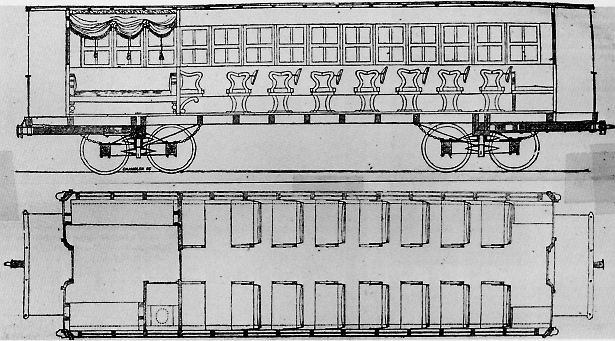Davenport & Bridges - Page 2
In 1842, the Davenport & Bridges works were moved to the
south side of Main Street, where they occupied the entire block between
Portland Street and Osborn. They would remain the largest single plant in
Cambridgeport until after 1850. {425}
A description of the works was published in
the American Railroad Journal in 1848. This description was picked
up by the Cambridge Chronicle and is reflected in the following
from Leaders of Cambridge Industry:
{439}
| “To the three-story brick building fronting on
Main Street, two large wings were added in 1848, extending on Osborn
Street, known as the east and west wings. [Main Street running
roughly east and west.] The west wing, facing on Osborn Street, was
about three hundred and fifty feet long by forty feet wide.
[Slightly more than the length of a modern football field from goal
post to goal post.] The east wing extended parallel to the other
wing, with an open area between. This building was two hundred and
forty feet by forty-three feet, both wings were brick, two stories
high. One wing was used as a foundry and blacksmith shop, the latter
containing sixteen forges, while the other was used as a machine
shop. There were eight smaller buildings, most of them about one
hundred by thirty feet, some of them being two stories high. Over
one hundred men were employed.” |
Surprisingly, this works of the largest of
the earlier car builders never had a direct connection to any railroad!
Charles Davenport was one of the incorporators of the Grand Junction
Railroad, which was chartered in 1847and hoped to make a connection to his
car works, but by the time the railroad was completed in 1855, he had
retired and his works was shut down. But that’s getting ahead of our
story.
{439}
In 1842, Davenport & Bridges had orders in hand
for 800 cars.
{245}
The American Railroad Journal
{444} described cars built that year for the Auburn & Rochester Railroad
—
|
“The cars are each 28
feet long and 8 feet wide. The seats are well stuffed and admirably
arranged—with arms for each chair, and changeable backs that will allow
the passenger to change ‘front to rear’ by a
manœuvre [sic] unknown in military tactics. The size of the cars forms a
pleasant room, handsomely painted, with floor matting, with windows
secured from jarring, and with curtains to shield from the blazing sun.
We should have said rooms; for in four out of six cars, (the other two
being designed only for male passengers,) [sic] there is a ladies’
apartment, with luxurious sofas for seats, and in recesses may be found
a washstand and other conveniences.
... These cars are so hung on springs, and are of such large size, that
they are freed from most of the jar, and especially from the swinging
motion so disagreeable to most railroads.” |
The drawings below were published several years later, but
seem to agree closely with the description above.
 |
|
Davenport & Bridges built coaches like this probably from 1845 to
1860. The large “restroom” at the left end of the car, with its
longitudinal benches, was for the ladies. (Above, American
Railroad Journal, 7 August 1845. Below, American Railroad
Journal, 8 August 1846.) |
 |
In 1844, Charles Davenport received Patent No. 3,697, dated
10 August 1844, for a metal truck with cross-bracing. Davenport says in his
application, “I do not claim making the truck frame of a rail road [sic] car
or carriage with side truss frames united with diagonal braces as this has
been known before, nor do I claim making these frames of iron or other metal.”
But then he continues to describe the way his truck is constructed.
Others had competing designs, including
Eaton & Gilbert and Fowler M. Ray,
who would later found the
New England Car Spring Company, promoting “springs” of India
Rubber.
Davenport also received other patents we haven’t identified
yet, and reportedly invented the reversible car seat, which eliminated the
need to turn cars at the end of each trip. (Note the seats in the
illustrations above.)
|

